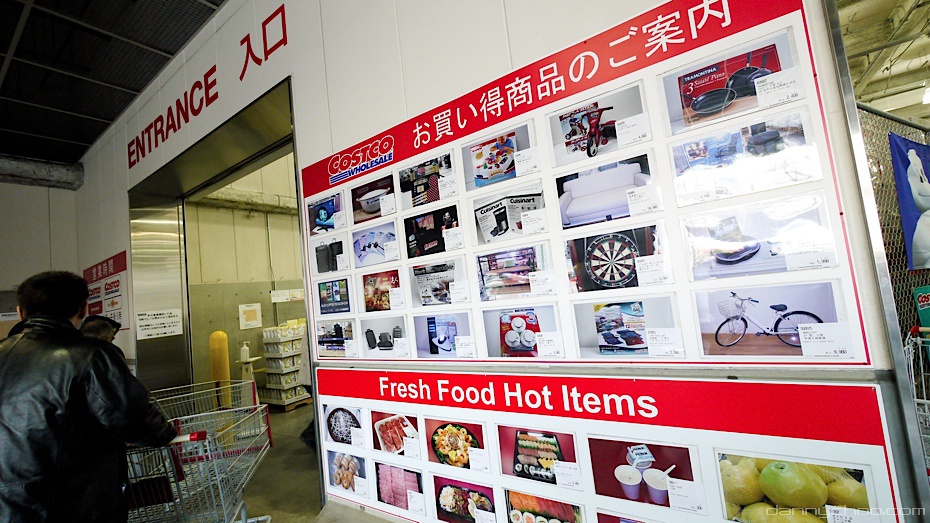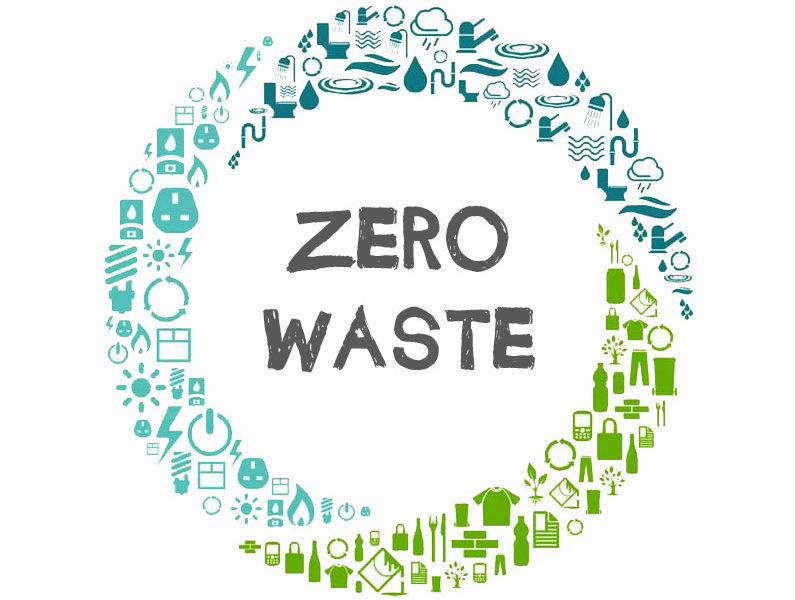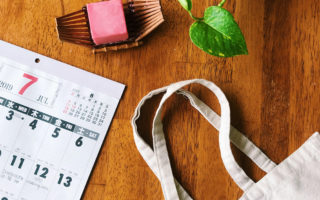Recently, I’ve become much more aware of the environmental impact my daily actions have on the earth. Living a more sustainable lifestyle has always been a vague notion in the back of my head, but a switch flicked on in my head and it’s suddenly one of my top priorities. I think it’s the combination of feeling a responsibility to take care of Mother Earth for the sake of my daughter’s future, coupled with hearing startling facts about the dire predicament our oceans are in. At our current (and ever increasing) rate, the plastic in the ocean will outweigh the fish by the year 2050. How is that even possible? Fervently poring over Pinterest results from searches such as “zero waste living,” “plastic free lifestyle” “sustainable living” and “plastic free kitchen,” it soon became apparent to me that many others have been conscious of the toxicity of plastic long before I gave it a second thought. Fifty percent of plastic used is single-use plastic. Our consumerism and materialistic lifestyles are costing us the planet we live on. Gulp down a water bottle, toss it. Devour a candy bar, toss the wrapper. Buy takeout, use the plastic silverware, toss it. Splurge on new clothes, toss the bags they came in. Once we throw our plastic in the trash, we no longer think about it. It has ceased to exist for us. But the lifespan of that piece of plastic is just beginning. We can see the effects of our thoughtlessness and carelessness in the video below. Our ocean is becoming an ocean of plastic.
I realized that I couldn’t live with myself if I continued living the way I do, using plastic the way I do. It’s not fair to Mother Earth, it’s not fair to the animals who share our planet, and it’s not fair to future generations. “Future generations” always sounded like some far off group of people. But for me, the future is here. She’s living in my house, she’s snuggled up next to me on the couch, she’s looking up at me with her big brown eyes, and she’s trusting me unconditionally to do what’s best for her. I wouldn’t be able to look into her eyes if we kept consuming plastic recklessly in our household. I couldn’t tell her that we knew what we were doing to the earth this whole time and did absolutely nothing to stop it.
I started my research. What does it mean to live a zero waste life? The ultimate goal is producing zero waste (obviously). This is more of a goal than anything–most zero wasters at least recycle some items here and there. One of the first articles I stumbled upon was Kamikatsu, a zero waste town in Japan. Although living a zero waste lifestyle may seem like a long shot for most of us, there are five simple steps I’ve recently taken to reducing my family’s footprint on this earth. Although it’s just a small difference, it will still make a difference. There’s a story that comes to mind when trying to put into perspective how a small action can have a huge effect.
There was a man walking along the beach when he came across thousands and thousands of beached starfish washed up on the sand, slowly dying. He started tossing them in the ocean. Another man walking along the beach stopped and asked him, “Why are you doing that? It’s not like it will make a difference. There are thousands of starfish out here!” The first man picked up another starfish, tossed it in the ocean and replied “It made a difference to that one.” Each of us CAN make a difference. The change always must start with the individual, and it will then have a ripple effect–from one individual, to a friend group, to a community, and so on.

The average American produces 1600 pounds of trash each year. Granted, we’re living in Japan now, where recycling is a way of life. Every household does it. If you don’t, your trash will be left on the curbside with a giant red rejection sticker on it. “All your neighbors now know you hate the planet. Please re-sort your bag of shame properly.” is the loose translation.

At street festivals, there are men standing behind the lines of trash cans, watching with hawk eyes to make sure you put your trash in the correct bin. Although I’m sure it helps that Japan is a small island, the mindset here is different. Society here is not self-absorbed the way it is in the States. The Japanese exist with a constant awareness of others. The trains are quiet so as not to disturb other passengers. Everybody stands to the right on escalators so that people can pass easily on the left. Smokers only smoke in designated areas. Litter on the streets is minimal (almost non-existent). The first driver who sees your signal on lets you merge into his lane. The culture tends to think of the importance of Japan as a whole, instead of focusing on the individual. I’d say Americans could take a leaf or two out of their book.

Although I let myself off the hook a little since Japan is recycling our trash so diligently, I asked myself how we can cut down the trash in our household (focusing on plastics). We already cloth diaper, use reusable grocery bags, use reusable water bottles and eat a mostly plant-based diet when we’re home. But there has to be more we can do–there’s always room for improvement. Here are the first five baby steps we are taking towards a more eco-friendly lifestyle.
1. Buying in bulk
At first, I was overwhelmed and discouraged since most of the plastic we use is in the kitchen–our bottles of condiments, our bags of rice, our bags of organic sugar, our snacks, our bottle of oil, and basically everything else. The majority of food is packaged in plastic! There isn’t a bulk food store near me, so I can’t eliminate plastic waste from our kitchen as effectively as some people are able to. Many zero wasters advocate for taking your own mason jars to your bulk food store to fill them up on the spot, but that isn’t an option for me. But instead of getting caught up on what I can’t do, I decided to focus on what I can do. We decided to get a Costco membership so that we’ll be able to buy more of our food in bulk. Buying in bulk = less packaging. It won’t be plastic free, but it will definitely be significantly less. I’ll take it!

2. Use shampoo and conditioner bars
I honestly didn’t even know shampoo bars were a thing until this week. I found the bars below on Amazon, and placed my order immediately. I tried them out for the first time today and they worked great! I was skeptical of how effective they’d be, but I couldn’t even tell the difference from when I use my usual shampoo and conditioner. The only thing you have to make sure to do is to keep them dry in between showers, otherwise they won’t last nearly as long. I was so excited to find out that I can completely bypass plastic shampoo and conditioner bottles.
3. Reusable produce bags
Using reusable grocery bags is a given, but what about all of those tiny produce bags I was getting every trip to the commissary? I had a few small mesh bags I had sitting around that I’d picked up from Daiso, the local dollar store. I bring them with me for my weekly shopping trip, avoiding those extra ten little plastic bags every trip! Another light bulb moment: I can use reusable bags any time I buy anything. Electronics, clothes, books can all go in a reusable bag! I’m not sure why I tended to only put my groceries in them before. I keep extras in our trunk so if I forget to carry some down (which is highly likely) from my apartment I have a backup plan.
4. Use a biodegradable toothbrush
Did you know that every plastic toothbrush ever made is still in existence? I mean, all plastic ever created is still in existence. If Mozart downed a water bottle while he was writing “Eine Kleine Nachtmusik,” that plastic bottle still wouldn’t have disintegrated yet. You know what does return to the earth? Bamboo toothbrushes. You can just toss them in your compost pile after you’ve used them for a few months. Zero-waste toothbrush? Check.
5. Shop seasonally
I recently stumbled across a local organic farm that sells sets of vegetables every weekend. Around $15 for a selection of different veggies, and you can add more of your choosing for a few dollars more. Absolutely no packaging when you buy local, and you’re supporting a local farmer! (But, bring your own bag). Shopping seasonally will eliminate all of the plastic bags of frozen veggies I currently have sitting in my freezer. Buying this set of veggies made my meal planning for the week so much easier; see all those eggplants? I tossed some eggplant in last night’s orzo vegetable soup, made eggplant parmesan for lunch today, and will make eggplant creole before the week’s over. It also is introducing me to things I wouldn’t have tried before. I had never heard of water spinach before this week: “Stir fry it with garlic, bacon and sesame oil,” the farmer advised me. Minus the bacon, I fried it up and we got our greens fix in a few times this week.
These five changes were almost effortless for us to incorporate into our life. They’re just baby steps on my quest for a more sustainable lifestyle, but the first step is awareness. Even substituting a few eco-friendly products into our life will make a difference in helping our planet and keeping plastic out of the oceans and landfills. My conscience is a little clearer today than it was yesterday.
Cover photo by Orcas Island Exchange




Wonderful article, and GREAT ideas!! Going to go to Amazon to try for a bamboo toothbrush.
Jennifer, I am so glad you are on this earth. With you and your generation, the earths future is in wonderful hands!!!
That’s awesome! I’m so glad you’re going to try out the bamboo toothbrush! You’ll have to let me know how you like it.